#while p-did alters are a mechanism
Text
Trying to ingrave into my mind that I should not feel invalidated by other systems functioning differently. Most did systems don't know about p-did, when they say things that hurt it's because it's true for them not because they think we're doing it wrong or something.
#charlie is rambling#for exemple I've often read that alters should not be defined only by their role#when most of my part's identities are build around theie role#it's just who they are#most dont give a shit about existing in the outside#and yes it can be completly mind-blowing for did systems to hear that#but it's true for us#we've got at least 2 parts/alters who only care about fronters living a normal-ish life#apparently its because alters are less developed in p-did#but I hate the way of phrasing it#wtf does developed even mean here#it's more like did alters are more independent#while p-did alters are a mechanism#composed of individual wheels#each wheel is still a whole wheel but you remove one and the mechanism stop working#we're interdependent on each others
2 notes
·
View notes
Text
Crew attire cosplay?

Lately I've been thinking a lot about "what would separate mecha crew equipment from that of a tank crew, or a fighter crew": A lot of military surplus stuff is already really close to what we're going for, and I realized "Motorcycle boots look a lot more like mech pilot stuff than military boots do", which got me thinking what other odd equivalences exist.





The one which really surprised me was how famous mecha live action SF Gunhed used a wetsuit as a stand-in for "generic scifi bodysuit", and that it worked weirdly well, actually?
"Why not latex?"
Latex rips too easily in contact with straps and hard elements, overheats far, far too easily despite having the looks. Thin neoprene works. really well.
So I kept exploring.
One thing I did seriously debate is other than rappelling equipment, would a pilot need something like a rigid knee-brace for hard landings to protect the ACL when they disembark from the robot which is common with high impact parachute equipment.
Some varieties also include counter-weighted springs which make it harder for you to close your knee, but make lifting heavy things on your back and climb much much easier during the ascent phase.

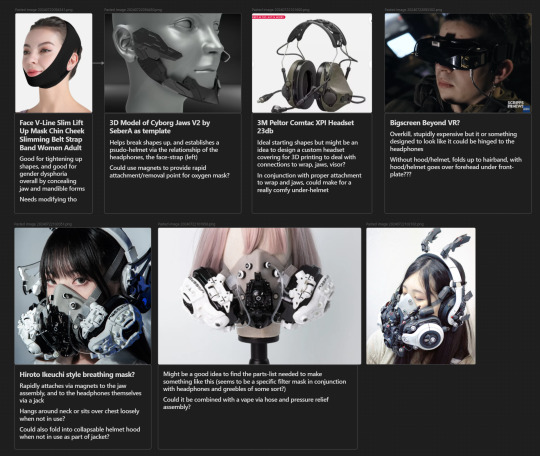
That led me towards Deck Crew helmets, which meet the hood requirement, and of all things, chin wraps which are really unobstructive and you can eat and drink while wearing one pretty comfortably (I say this as someone currently stuck wearing one)
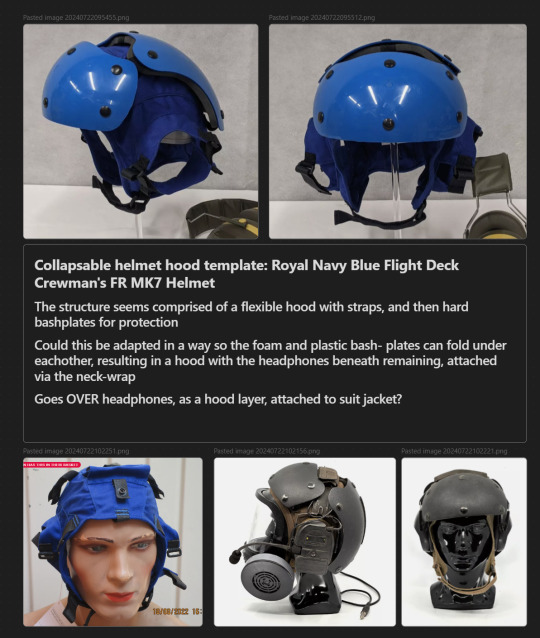
So what we're looking at here is the HGU-24 and HGU-25, often worn by deck crews because it gets along just fine with the famous MCU-2/P AKA "Millenium" mask famous with drone communities as they're designed to be worn together.
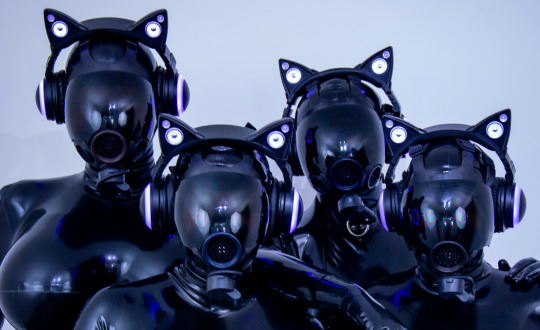

Its literally the exact same mask with a minor paint adjustment.
"What's the difference between a drone and a pilot?"
"One wears AXENT and latex, the other wears HGU-25 and neoprene."
"Anything else?"
"Drones have less sex and do as they're told"
Its got the bash-plates you want for an ejector-seat, but it also has the padded foam you want for an impact element, and if it latches properly and the jaw mechanism is well made enough, you could probably include a hans mechanism attached to the jacket which locks into a socket in the pilot's seat to stop a pilot from breaking their neck in a collision.
What do you guys think?
Any suggestions? What I'm really curious about is what you think pilots would remove, customize or alter for practical or decorative purposes.
This is basically the result of roughly a year of casual research into pilot attire, outfits and looks.
The helm and the hood seem to be where the most manual cosplay stitching and 3D printing work is likely going to be required, with the wrap and helmhood.
Addendum:
I've not gone into waste management systems (UCL/FCL human-factors engineering stuff with internal and external recovery systems), since I'm looking at this mainly as an attainable costume or ensemble.
Edit:
I am learning some of you use aquatic mecha and find this unsatisfactory.
And you won't shut up about how the coolant mass flow rate lets you do really wild shit with your weapons my "land-loving" platform even can't dream of
While I am jealous by your sheer tonnage and the output of your reactors, I've got you covered.
Behold: Immersion suits.





They also make surprisingly good sleeping bags, even if you're on water.
They're literally designed to keep you alive if you're forced to abandon an oil platform, and are known to include a radio and even rations and a water filter.
194 notes
·
View notes
Text
Complex Dissociative Disorders Terminology: A Basic Primer
[Large text: DID Terminology: A Basic Primer]
Here are some common terms you may see when researching complex dissociative disorders!
Basic Terms
[Large Text: Basic Terms]
Dissociation - An internal feeling of disconnect between one's body, history, thoughts, emotions, memories, acts, and/or environment. Not everyone who experiences dissociation has a dissociative disorder. Dissociation is a common coping mechanism in times of stress.
Alter - A dissociated part of a personality that failed to integrate into the self due to trauma. These parts may have their own age, gender, needs, wants, sexuality, species, memories, actions, urges, opinions, skills, abilities, etc.
Fragment - An alter who is not fully “fleshed out” or differentiated. They may have a single function, emotion, or memory.
System - The entire collection of alters in one body
Front - The alter who is “in front” or “fronting” is aware of the outside world, and controlling the body.
Switch - “to switch” is to change what alter is fronting (controlling the body). This can be slow or fast, planned or unplanned, accidental or intentionality.
Co-consciousness (co-con) - When two or more alters are aware of the outside world they are co-conscious.
Passive Influence - When an alter who is not currently fronting affects the fronting alter. This can be in the form of memories, thoughts, emotions, desires, preferences, actions, etc.
Splitting - To split is to create a new alter
Amnesia - partial or complete loss of memory (not exclusive to CDD)
Disorders
[Large text: Disorders]
Complex Dissociative Disorder (CDD) - An umbrella term for all dissociative disorders that cause systems. This list includes Dissociative Identity Disorder (DID), Other Specified Dissociative Disorder Type 1 (OSDD-1), Unspecified Dissociative Disorder (UDD), and Partial Dissociative Identity Disorder (P-DID).
Dissociative Disorder - To quote https://did-research.org/ “a disorder characterized by a separation of consciousness from emotion, sensation, memory, personal history, sense of self, or sense of reality.”
Dissociative Identity Disorder (DID) - DID is characterised by two or more dissociative self-states "Alters" that are linked to some degree of amnesia and are capable of assuming executive control.
Other Specified Dissociative Disorder Type 1 (OSDD-1) - OSDD-1 is a disorder that is very similar to DID but lacks fully differentiated selves (type 1a) or amnesia (type 1b). OSDD in general is a category of dissociative disorders that while not fitting the criteria for any other dissociative disorder, can still be specified.
Unspecified Dissociative Disorder (UDD) - A category of disorders that can not be labeled, or are unable to be fully understood. This diagnosis is most often applied in crises or emergencies.
Partial Dissociative Identity Disorder (P-DID) - As outlined by the International Classification of Diseases is a condition similar to DID where “One personality state is dominant and normally functions in daily life, but is intruded upon by one or more non-dominant personality states (dissociative intrusions).” Essentially one alter is always in front, but they regularly experience passive influence or co-consciousness.
Multiple Personality Disorder (MPD) - This is a former term for DID. The name was changed because DID is not a personality disorder, it’s a dissociative disorder. Many people today find this term insensitive, outdated, and offensive, although some systems may choose to self-identify with the term.
The Theory of Structural Dissociation (TOSD)
[Large Text: The Theory of Structural Dissociation (TOSD)]
This is the current understanding of how dissociative disorders as well as other disorders caused by trauma are formed and function. To quote https://did-research.org/ “this theory centers around an inability to integrate traumatic memories and materials into one’s primary personality, sense of self, and self history that results in an overall inability to integrate parts.”
To learn more about anything referenced above I would recommend checking out https://did-research.org/
Thanks, Mod Patch
114 notes
·
View notes
Text
short essay thing i wrote in avf about plural tsc that i feel like people should see bc its so interesting to me
just to preface i highly highly doubt this is all intentional on alan+teams part due to the fact that plurality is just ,, not that well known. also im not too knowledgable on non traumagenic systems and all the stuff surrounding that so i will just be speaking from what i know from my own experience + research
so anyways. from the start of sec's life she has been kind of in a high stress situation. from the getgo she had to hide her existence from alan due to likely knowing the fate of the other living sticks he has made + the fact that she very much isnt supposed to be alive. she lets her guard down, makes friends, and then almost instantly theyre all deleted. although did and osdd1 form from long-term trauma (often accompanied by cptsd) and all of this only happened in a few minutes, at the very least this provides the basis for some sort of dissociation
theres a moment where she glitches and changes to black for a second. obviously back then this was intended to be an allusion to the fact that she's the chosen one's return, since alan+team hadn't planned ava s2 yet and tco was just regular dead atp, but its interesting to consider the sudden change in her personality. shes not even shown to be overly angry like she usually is, just a. Calm?? specifically the same calm that preceeds her beating up tdl in ava s2.
notably that moment in s2 where she unlocks her powers is like. sudden change in personality and demeanor, suddenly gaining the powers, and memory loss afterwards. even though she only really switches between two "modes" it's reminiscent of switching between two alters (while its uncommon for a system to have only two alters it's not unheard of, especially in cases of osdd-1a where theres not much distinction between personality states).
i said ava/e specifically because the aveducation videos in particular provide a very interesting insight into tsc's psyche. while alan said in his avg avma video that the series isn't canon, a few things about the series have already been retconned. avphys was originally supposed to be the last entry in the series, but with avma+avphys+avgeo's massive success and the lead animator's interest in these sort of topics i wouldn't be surprised if they continued to make more, especially considering that they're now interconnected via avgeo. phi, who appeared at the end of avma, is the protagonist of avgeo, and there's that scene at the end that teases avphys that i'll also get into in a sec because it's very interesting.
about why i think it represents tsc's psyche specifically and not just some math dimensions that tsc happens to stumble upon: in the avg avma video dj proposes the dream theory, that this is all happening in a dream during ava s3. noncanon of course but considering alan himself knows about it and ave seems to be gaining some kind of overarching arc, as well as the fact that its releasing between ava s3 episodes (which is going to focus on tsc's powers) i wouldn't be surprised if the episodes slowly grow more and more representative of her mental state as she works towards properly unlocking her powers
anyways speculation aside. avphys introduces a second second (haha). this is explained through the mechanics of time loops and whatnot, but at the same time, the hat tsc seems to know a lot more than regular tsc, having.. basically created the universe. even if our tsc can then explain this to the next tsc, hat tsc is shown to literally create the entire universe avphys takes place in (again tying back to her powers of creation) and also act much calmer and composed compared to our tsc. it seems like hat tsc is somewhat representative of the state tsc gets into when she unlocks her powers, shown both times in ava s1 and 2. shes cool and mysterious and all knowing i want her so bad
the scene at the end of avgeo is the most compelling thing for this idea (and the push that made me go "ohhhh my god multiplies her). hat tsc appears once more, this time seemingly wanting to communicate more with our tsc, but being cut short by tsc getting surprised and falling. the most interesting part to me is the imagery in this part— there's tons and tons of tsc's, all reflected, and being reflections makes them slightly different from what we see (of course light refraction will always make things appear slightly different; discolored, blurred, flipped etc). hat tsc is framed as Also a reflection despite being shown as different person/personality state.
i just got back from dinner and lost my train of thought. im not sure if this is enough for other people to consider her plural but at the very least i feel like interpreting her as such does enhance one's reading and understanding of her, as well as how you write her (for those who do).
#alan becker#animation vs animator#animation vs maths#animation vs physics#animation vs geometry#avm tsc#ava tsc#ava second coming#avm the second coming#theo's rambles#interesting to me. interesting#sorry theres a lot of waffling im bad at getting to the point
31 notes
·
View notes
Text
dskjhsdk
(page 520-532)
8/22/2009 Wheel Spin: being silly :3c
Verdict: TWO GREAT PUNS
8/23/2009 Wheel Spin: Character Switch
Verdict: <3 Forever John <3

We continue to progress through Sburb in leaps and bounds, with only a brief interruption from Dave to discuss puppet anatomy in lurid detail. I’m so delighted to finally see the punch designix in action. My headcanon is that its keyboard has really great keys to press, the kind that make a satisfying click clack when tapped. And the noise when the card itself get punched by the machine? Man I wish that page had sound.
It’s helpful that this machine gives instructions. Would have been nice if the alchemiter did that too, you know, when John was four minutes and thirteen seconds away from a violent death. The comic spends longer (by number of pages) figuring out the designix than any other machine, which makes me think this one is really important, presumably for punch card alchemy. The process, in short, is to captchalogue an item, read the item’s unique alphanumeric captcha code from the card, type that code into the keyboard, and punch physical holes into the card the item is stored on. This traps the item, but presumably allows it to be produced by the alchemiter, following the same cruxite dowel → totem lathe → alchemiter process as the pre-punched card.
We saw with the ‘perfectly generic objects’ made by an uncarved dowel that the totems can be used multiple times, so this is a great way to duplicate objects – I would recommend more captchalogue cards, based on John’s current woes – although this will likely cost build grist, which is already at a premium. But for this to be a true alchemical process – transmuting a substance into another, more valuable substance – there needs to be a way to modify objects with predictable results. The hammer’s code is ‘nZ7Un6BI’ but what if John typed in ‘mZ7Un6BI’ or ‘Zn7Un6BI’ ‘Nz7uN6bi’ or ‘IB6nU7Zn’ or ‘nZ7UnGAY’? Could these slight modifications produce variations on a hammer, or items similar to a hammer? Are there rules that govern how an item would change based on how its code is altered? Would this look something like computer programming, forcing John to actually stick to his hobby instead of abandoning his code files on his desktop when they get too hard?
Captcha codes are designed to let humans browse the internet while stopping computer programs from attacking websites – so what’s the equivalent here? My guess is that although we’ve seen the imps in John’s house make use of strife cards, they and other NPCs won’t be able to decipher the captchas on the back of cards. They can use basic inventory mechanics, but wouldn’t be able to perform alchemy, which is what sets the player apart. I’m not sure about Nannasprite though. As someone who is both human and computer program, could she decipher a captcha?
Every time John mentions his dad, wanting to find him or wishing he was around to get some additional shaving cream, my heart breaks a little bit. He reminds me of a kid who’s gone away to camp for the first time and is really excited for some independence but ends up getting homesick. John keeps putting that bunny back in the box and every time, he’s referencing a scene where a dad risks his life just to get a gift to his daughter on her birthday, and… I can’t help but think that John’s thinking of reuniting with his dad every time he makes this reference, too.
Rose and Dave’s dynamic is fascinating to me. They should be studied by a team of world leading cognitive scientists. Rose is not at all taking Dave seriously while he’s lamenting entering the puppet singularity, and I wonder if he prefers it that way. As someone who’s not comfortable with emotional honesty, Dave might not want someone to respond with genuine sympathy, and by knowing that Rose will keep to a suitable number of layers of irony, Dave trusts Rose and can be more open with her. From this conversation (p.522) I feel like Dave has a campaign of one-upmanship with Rose like he does with his bro, except with Rose they’re on equal footing. Also I don’t think Rose’s poem works as a rap but she’d kill it at slam poetry.
The puns are SO good. ‘Captchalogue’ referring to internet captcha codes as well as the cards ‘capturing’ items is a great payoff for a word we learned 500 pages ago, and ‘proboscalypse’ is. I don’t have words
17 notes
·
View notes
Text
Truths and Myths: Pluralpedia Part 5, Functions of parts
This is an educational post.
Written by 🤍. (Temporary emoji placeholder)


Note: Pluralpedia uses shared reality to describe events that take place when a part is in the executive function of the body, in the outer world rather than an innerworld.
A system can only be formed through having a disorder such as DID, P-DID, or OSDD as the individual would have dissociative identities, and these disorders are formed through chronic early childhood trauma.

Catatonia is its own diagnosable condition. Although catatonia is associated with psychiatric conditions such as dissociative disorders. According to The Royal College of Physiatrists, it is still not understood why certain people do and don't get catatonia even with the associated conditions. It is still unclear why Catatonia happens within the conditions. So, if it is related to the way parts act in DID, it has not yet been confirmed. The website also talks about other disorders, neurodivergent and physical conditions that can cause catatonia.

Taskgenic fact check:
Although the system part of this term is inaccurate, this origin for a part is not. In the work of Van der Hart, Nijenhuis, and Steele (2006) in “The Haunted Self: Structural Dissociation and the Treatment of Chronic Traumatization”, they present the idea that later in life structural dissociation becomes a mental defence mechanism from the mundane elements of life despite starting from traumatisation. They present the case study of a woman who has a part that is designed to wash dishes because it's a task she hates doing.
However, another example of fragmentation being a defensive mechanism is when the brain is able to split if it is aware that a task is coming up that could reactivate traumatic memories, this could be dreading to visit a family member, this means that the individual is now able to handle that experienced because the brain has made a part designed to complete that task and by preparing beforehand distress has been minimised. Examples of this are written in The Haunted Self.
Other hyper specific tasks for parts may also exist, such as having a role where you only shower or handle money and these might have formed because they may be overwhelming tasks due to trauma or too over stimulating.
This also applies to a part created to help with an internal task. For example, there might be one part that has been in distress for a while, and a new part is made to calm them down as that task couldn't be done by another part. This may later on result in that part being a personal caretaker to the other and that being their more specific role, but their initial formation was to finish a task no one could.
These ideas and the Window of Tolerance are further discussed in a previous post we made called Black Holes: A metaphorical view of Trauma in Dissociative Idenity Disorder. Under the section of ' The Event Horizon'.
Hollow fact check:
Having no alter in the body would probably be akin to losing consciousness and therefore the person would faint rather than have a panic attack, but that is how we would interpret it from the idea that parts are disjointed centres of consciousness but we are not professionals. We will change this if we find new research that would suggest otherwise. However, if this is common enough to have its own term then DID would be considered to be related to a type of fainting disorder and many people with DID would have experienced this at least once, when in reality not everyone has ever fainted. If a person is fainting unexplained or is experiencing catatonia/panic attacks they should instead be urged to visit a doctor to treat those issues instead of brushing them off as "another element of DID" because that is harmful and could possibly put their life at risk if untreated.
Van der Hart O, Steele K, Nijenhuis E. The Haunted Self : Structural Dissociation and the Treatment of Chronic Traumatization. W.W. Norton; 2006.
Royal College of Physiatrists. Catatonia. www.rcpsych.ac.uk. Published 2022. Accessed August 7, 2024.

#did#dissociative disorder#actually did#did system#did alter#actually dissociative#dissociation#dissociative identity disorder#complex dissociative disorder#cdd system#actually cdd#cdd#actually system#dissociative system#traumagenic did#actually traumagenic#pluralpedia#other specified dissociative disorder#partial did#partial dissociative identity disorder#pdid#osdd#ossdid#osddid#did osdd#did community#traumagenic system#system stuff#endos dni#anti endo
19 notes
·
View notes
Note
Not P-DID Culture, but we want to give some info about a specific thing we see repeated a lot (if you don’t mind)
A while ago, an anon sent an and saying: “the point of the disorder is to have other consciousnesses be able to take over for you to help you survive” and that’s a common sentiment repeated in the larger system community…but, while true for some, that’s not quite accurate
Before we explain, five things are worth noting:
We’re not calling anyone out! This is just a thing we’ve seen repeated in system communities (over and over again) and it’s not 100% accurate and wanted to bring that up
We’re explaining two models/theories. There are others not mentioned
These are models/theories that try to explain things
For the sake of like simplicity, not writing a wall of text and whatnot, everything we’re going to say is a highly oversimplified explanation (also we’re human and might be misremembering things)
These won’t necessarily be applicable to everyone— everyone’s different and unique and there’s always exceptions (among other things)
TLDR though: most of the theories/models we’re read describe the point of (most) DID/OSDD/PDID systems as “it was (originally) created as a coping mechanism” (rather than “have others be able to take over to help you survive” specifically. There can be— and seemingly often is— overlap between the two, but not always with the main example being us PDID system)
Theory of Structural Dissociation (extremely simplified)
The Theory of Structural Dissociation (ToSD) is the current “main” theory when it comes to dissociation. It is a theory, which people have opinions on, and may or may not end up being replaced by another in the next decade
An extremely simplified explanation of ToSD is that: there’s an assumption that no one is born fully integrated and that one typically naturally becomes integrated (into one coherent and cohesive being) over time. This did not happen, however, in systems and dissociative barriers develop (these are the things tend to lead to alters and whatnot)
From what we’ve understood, ToSD says that the point is that the mind didn’t integrate and develop dissociative barriers in order to cope. Switching isn’t the point; it’s a thing that can (but not always) happen because of it
(Note: ToSD also discusses PTSD, CPTSD and other dissociative disorders. We, however, have extremely simplified it for the sake of this ask. For more details/info, that’s still easy to comprehend, we recommend the CTAD’s video (on YouTube) on the topic and/or DIS-SOS (website)’s articles on it (and the one about ego states vs dissociative states in particular since we found that article has the best explanation))
As a Coping Mechanism
To our knowledge, this is not an “official” theory/model (in the psych field), but we personally like it. This says that the point of the disorder(s) is, in short, it being a coping mechanism (and, as an extension, how one’s system function is the coping mechanism)
For some people, the coping mechanism the brain created is a system that involves switching…
For others, the brain “decided” (so to speak) that the best coping mechanism is a system with barely, if any, switching for whatever reason (e.g., maybe the brain thought creating other alters and giving them the memories/feelings/etc was enough and/or that switching was unnecessary; maybe the brain thought that being a system was the best coping mechanism, but that switching itself would be dangerous [as in it could cause more problems/not be something that would help the system cope])
We— or, at least, I (the host)— like this…whatever this is considered…because it helped us understand our system better (it was a very “oooooh. That makes so much sense suddenly” moment for me lol)
(This all being said, we do want to once again mention that these aren’t necessarily applicable to everyone. For example, ToSD articles/books/etc usually have some form of “we’re not looking at/referring to cultural and/or spiritual related multiplicity” disclaimer)
!!! Not much to add, I'm really tired, but thank you! That also makes sense to us, pretty helpful!
#not pdid culture is#pdid community#actually pdid#pdid system#pdid#partial did#partial did system#partial dissociative identity disorder#did system#actually plural#plural#plural community#plurality#plural system
13 notes
·
View notes
Note
I know you're not going to play Generations or Gen Ult., but I hope they bring back two features from that game in Wilds.
First one being the style system. It's the perfect excuse to keep the silkbind arts you like in Rise because the hunter arts that were part of this feature are what the silkbind arts were based on. But the more exciting part about this feature was you could choose to sacrifice certain parts of your moveset to completely alter how a weapon played.
Generations had 4 styles to start with.
Guild was your standard Monster Hunter moveset, no bells and whistles.
Then you had Aerial style, which changed your dodge into a tiny little forward hop... which if you hopped onto a monster would launch you into the air, giving you extra offensive options while airborne and made mounting a whole lot easier.
Then there was Adept style, which gave every weapon perfect dodge, and if you could block, the ability to parry, and successfully doing either had counter options. I think some moves even gained guard points that allowed you parry an attack with another attack.
Striker was all about spamming Hunter arts, you had more of them, they hit harder and charged faster (each one had their own cd, instead of sharing the same resource like in Rise).
Generations Ultimate added two more that really shook up how you played though.
Valor style was all about aggression. You started with a small move pool, a valor gauge filled by dealing damage, and a valor sheathe mechanic, where you could hold the sheath button for a slow sheathe that, if you were hit during it, reduced the damage, by half and turned it into red hp and filled the valor gauge. Once the gauge is full, you regained all your missing moves, and some of them even got powered up, and you'd stay in this state as long as you kept attacking and avoiding damage outside of valor sheathing. You had to know both your weapon and your opponent to keep this one at maximum efficiency.
And then there's the weird one, Alchemy Style. This one also sacrificed a lot of moves, but it gave you a whole new "item crafting" system to play with, which gave bonus effects to the entire party and boosted the effects of everyone's hunter arts. People thought kinda overlapped with hunting horn so it wasn't used often, but it was funny because part of the style was finding time to stop fighting and craft items using what is basically a giant beer keg. It did create a wide variety of actually good items that weren't available otherwise.
The other feature Generations had was the Prowler mode. it allowed you to play as your cat. This had it's own hp system, inventory mechanics, weapon quirks, and movement options. It was basically a 15th weapon in a sense.
P-Parry an attack with another attack? You mean like Dante?
...Alright. Alright. FINE I will try to find a copy of Generations Ultimate even if I have to play alone. I don't really get enough value out of my Switch anyway.
Honestly my MonHun friend who's played since 2 told me Generations sucked and to not bother with it which is why I haven't given it a look despite GU still being accessible, but thinking back on it they don't really like complex movesets and they were bewildered by Sunbreak having switch scrolls while I was having the time of my life with a doubled moveset + Redirection, so GU having 14 weapons with 6 styles sounds right up my alley.
13 notes
·
View notes
Text
A few frameworks I've found helpful for writing structural dissociation systems in fiction (e.g. OSDD-1/P-DID, DID... can't vouch for complex DID because I'm still learning about that):
The BASK Model
The Action Systems Model
Triad of Dissociation (third paragraph in the post)
Note: I haven't yet tracked down the academic source for the "triad of dissociation", so I'm not sure how scientifically accurate that is. It makes sense to me subjectively though, so I've been utilizing it in my own regard.
(I also don't think that it's inherently the "theory of structural dissociation" because it talks about the formation of single dissociated parts, not ANP vs EP and how many ANP are present.)
Additional note: the "BASK" and "action system" models can be used for trauma more broadly, so they're not limited to just SD-systems. Character with PTSD or C-PTSD? Applicable. Character with magic- or soul-based plurality but still experiences trauma at somepoint? Applicable. Obviously if you have world-lore or character-lore that denotes that their responses to trauma aren't like a human's, then these may not be as applicable, but you get the point.
Lastly, these three frameworks aren't the only things you should reference while writing a SD-system character, but they certainly help a lot with organizing character information and demystifying some of the underlying mechanisms for SD-system characters.
---------Capri rambling on applications of those frameworks--------
Also something helpful that I've been doing is combining the "Behavior" part of BASK with the "fight, flight, freeze, shutdown, etc." of action systems. As far as I understand, "Behavior" isn't limited to just those, but when I'm creating notes on what trauma features have ended up where and how they manifest among a system, making notes like "Trauma X: fight-Behavior is held by Y alter; shutdown-Behavior and Affect are held by Z alter" is very useful.
In that same regard, denoting what fragments of a particular BASK category are held where can also be helpful. E.g. one alter holds a fear-Affect, another holds an anger-Affect; one alter holds the Knowledge leading up to the traumatic situation while another holds the Knowledge of the traumatic situation itself; etc.
This also can apply to complex and longer-term traumatic situations, as opposed to just one-off events. In those cases, alters might collect those particular types or categories of experiences over time (e.g. an anger and fight-response holder, or an alter with Knowledge of multiple traumas), or they may have different kinds of traumatic content from different experiences within that timeframe (e.g. an alter with Knowledge from one, Sensory from another, Knowledge and Affect from a third...).
Furthermore, adding the triad of dissociation into that lets you figure out what degree of dissociation is being utilized to handle those traumatic memories, and at what points. You character can start off with a stage 1 dissociative part from a trauma at age 3, then have it gain more content (traumatic or not) and develop into a stage 2 by age 7, for example. I personally assign stage 1 parts to my stage 3 alters as well, as it helps me to track their individual trauma triggers and responses when needed, but I don't remember how academically or practically accurate that is to IRL.
Combining the three frameworks together, I can write notes something like this:
Age 3, 'Makami' is a non-structurally dissociative self-soothing measure when [chara] is sent to live with their neglectful grandparents.
Age 3-5, due to [chara being put into a different chronic trauma situation without support], Makami becomes a structurally dissociated response. Spared all aspects of BASK from their prior trauma, but retaining Knowledge of their current trauma, Makami soon develops into a stage 2 part who accesses energy management, exploration, caretaking, and social interaction action systems.
Age 15+, due to [a combination of a one-off trauma and chronic stressful situation], Makami develops enough to become a stage 3 part, retaining the recuperation-Behavior and some Sensory aspects of [the one-off trauma]. Makami continues to operate within the priorly ascribed action systems when the trauma is not triggered.
10 notes
·
View notes
Text
Source: https://dictionary.apa.org/introjection
“in psychoanalytic theory, the process of absorbing the qualities of an external object into the psyche in the form of an internal object or mental representation (i.e., an introject), which then has an influence on behavior. This process is posited to be a normal part of development, as when introjection of parental values and attitudes forms the superego, but it may also be used as a defense mechanism in situations that arouse anxiety. Compare identification; incorporation. —introject vb. —introjective adj.”
Source: http://traumadissociation.com/alters
Quote specifically is talking about when introjects appear in a system as a response to RAMCOA.
“Alters may be created which are internalized representations (introjects) of fictional characters. Some people with DID refer to alters based on fictional characters as fictives although this term was not used in literature on DID until 2021, before then fictives were described in many case studies and books, but had not been given a collective term.[9],[32],[35],[43] People with Maladaptive Daydreaming (MD) often have groups of inner characters based on fictional sources, but these are different to alters in DID because they cannot physically take control or interact with other, outside people, and are not split-off parts of the person's own personality, although there are other differences as well.”
9. Miller, A. (2014). Becoming Yourself: Overcoming Mind Control and Ritual Abuse. Karnac Books. ISBN 1782412182
32. Tutkun, H., & Sar, V. (1997). Treatment of Dissociative Identity Disorder in Turkey. Dissociation, 10(3), p. 148-156.
35. Schwartz, R. W. (2011). "An evil cradling”? Cult practices and the manipulation of attachment needs in ritual abuse. In O. B., Schwartz, J., & Schwartz, R. W. (Eds.). (2011). Ritual abuse and mind control: The manipulation of attachment needs (pp. 39-56). Karnac Books.
43. Christensen, E. M. (2022). The online community: DID and plurality. European Journal of Trauma & Dissociation, 6(2), 100257.
From Christensen, E. M. (2022). The online community: DID and plurality. European Journal of Trauma & Dissociation, 6(2), 100257.
“The appearance of fictives in the community is significant. In part it simply reflects a change in cultural references. It has been four generations since the diagnosis [historically referring to DID or MPD] was formally established, and young people now provides a very different presentation than those who grew up in the 1940s or 1950’s or 1960’s, but this makes them no less legitimate. However, this author proposes it also reflects the relationship ruptures due to the shift in parenting practices over the last two decades - while primary caregivers may be abusive in some cases, as has always been true, there is a higher population with relational trauma due to neglect and some of these children create imaginary inner worlds to deal with the lack of presence of attachment figures (Sándor et al., 2021). In this way, fictives are, in part, at times, substitute introjects, and then the related rich inner worlds are further developed through maladaptive daydreaming (Somer, 2002, 2015, 2016a, 2016b).”
Sándor, A., Bugán, A., Nagy, A., et al. (2021). Childhood traumatization and dissociative experiences among maladaptive and normal daydreamers in a Hungarian sample. Current Psychology. doi: 10.1007/s12144-021-02223-3.
Somer, E. (2002). Maladaptive daydreaming: A qualitative inquiry. Journal of Contemporary Psychotherapy, 32, 197-212.
Somer, E., Somer, L., & Jopp, D. S. (2016). Parallel lives: A phenomenological study of the lived experience of maladaptive daydreaming. Journal of Trauma & Dissociation, 17(5), 561-576.
Eli Somer, Liora Somer & Daniela S. Jopp (2016) Parallel lives: A phenomenological study of the lived experience of maladaptive daydreaming, Journal of Trauma & Dissociation, 17:5, 561-576. DOI: 10.1080/15299732.2016.1160463
2 notes
·
View notes
Note
TW: self harm
AITA for encouraging our ex-host to hurt themselves?
Hi. I'm a persecutor. The first known one in our system, even. I'm an Introject of our system's OC, who is also a system. My source is a persecutor alter who encourages unhealthy coping mechanisms. So, I've been here ever since we found out we were a system, possibly longer, as well as another persecutor and a fragment.
Originally, we were part of a community that glorified self harm to the point where it felt like you SHOULD be depressed. We don't know who our host was, but she had already desired depression due to wanting to be like our older sister who toyed with our emotions constantly back then. She easily fell into this idea that you need to hurt yourself to be depressed, and that knives were the "one correct tool" to use. That's the only way it was shown. Knives on arms, and then there's blood and it makes people numb in a weird melancholic way. Like it was a ritual. Especially when it's done "for someone else".
We were in this community for a while and even tried to hurt ourselves unsuccessfully during this time. We eventually were barred from the community by our parents who hadn't cared for the majority of our life about what we did online. They've since forgotten about it all.
Skipping some time, we figured out we were a system, etc etc.
Our host, now ex-host, Alex, was a bit of an idiot. They tried to act innocent to everyone else and refused to be open about our issues. Alex represented the idea that living in ideal ignorance, away from everyone, while still being aware of your own issues and coping unhealthily, was the best option. They were immature. Weak, even. Regressed. Vulnerable and gullible.
I was the "bad alter". The hateful, spiteful demon from who knows where. I didn't want to change. I still don't- I just can't interact with Alex anymore, and I've been less active as our brain develops different alters to cope with different things.
I punished Alex for being imperfect, because I hated how innocent they pretended to be and how they always turned everyone against me, every single time I did something wrong. Hell, Alex even convinced our Caretaker (again, now ex-caretaker) to push me away out of being able to interact with the system.
They treated me horrible and constantly switched between pitying n' babying me, and treating me like a monster. So I made myself that monster. I was nice sometimes, then I'd hurt them like they expected me to.
That's just how it was.
And then Alex found out we had a bread knife in the house.
They started cutting themselves. We didn't do anything but try to comfort them afterwards. By "we," I mean the rest of the dumbasses in the system. I just remained quiet, at first, even kind of enjoying it.
Until they started doing it more often.
I started monitoring them every time they did it. Alex always had a certain way of doing it. When nobody was in the kitchen, with the bread knife, only on the forearm.
So, I made sure that they knew THAT'S the "right way" to do it. And that they needed to do it. I convinced Alex, I suggested it when we were alone at home. It bugged everyone, but it made me feel good and it gave a structure to something in our increasingly chaotic life.
And I felt stronger. I started getting more and more bold. I'd hurt alters in the headspace. I'd belittle them into tears and ignore their complaints. At least, I think it was me. The other persecutor and I often share memories.
It's a bit blurry from that point. I don't know where I was, what I was doing.
I know that the host split into three. I know that our splitting became worse, as well as our "forgetfulness". I know that Alex was found out and we had to go to therapy. I know that it took ages to find out about the host split.
I don't know how long it's been since I've done anything.
My memories are vague at this point. I'm not sure if I'm a fragment or just going in and out of dormancy. But I've been wondering if I'm the asshole here. I probably am. I just can't get myself to think that way. I've always put myself above others. So my system asked me to do this.
I'm sorry if I've been rambling. Our ability to express our thoughts has gotten worse and worse.
To summarize, I am a persecutor and I motivated our idiotic, idealistic, ignorant host to cut themselves in a semi-ritualistic fashion. I think I'm the asshole here but I suck at being able to tell.
AITA?
#system aita#poll#4#self harm#self harm tw#tw self harm#heavy material#not putting this in the usual main tags for obvious reasons. gestures at the heavy topic#anon#intrasystem
4 notes
·
View notes
Text
Some aspects I love about Loco Tower, a Pizza Tower mod/fangame
To be honest, I’ve been meaning to write about this for a while, about a few months, I think? I WAS going to make a video about it, but I have some personal reasons for not doing that. At least, yet.
I’m going to start from the easiest place to start, the movement tweaks. Firstly, I’ve noticed that Damián’s slope physics were somewhat altered. The normal Pizza Tower slope physics always felt lacking to me, they did indeed pick up momentum, but not enough to make it feel good. Luckily though, Loco Tower’s seems to be much more satisfying and quick. Damián also seems to have a new move, after committing to a divebomb (pressing jump while diving), a button can be pressed for Damián to do a little hop out of it, which prevents the little bit of lag from landing a divebomb, which I find to be an interesting, yet small way of encouraging the player to tweak small aspects of their run throughout the level.
Next, I’d like to just gush over an incredibly minor aspect to, but it’s the TV background. Firstly, it moves with Damián, getting faster when he’s running, then at Mach 4. In addition to this, the background changes with a white flash when entering and exiting a secret. Though when such happens, there appears to be an issue where holding left or right allows the background to move, even though the player hasn’t emerged to or from the secret area at the time. Besides from that minor issue though, I think even the small details of the tv’s background is amazing as it’s not something you’d otherwise think about unless you decided to look into it. And even then, it feels incredibly natural.
Next I’d like to talk about everyone’s favorite subject: Show Time! Upon destroying the Pillar John equivalent, Patrick sitting on his glorious throne, the text “It’s Show Time!” pops onto the top of the screen reminiscent of Happy Hour from AntonBlast. I think the small popup, and how it appears in sync with the music is splendid, and a good mix between the Pizza Time popup, and, as mentioned before, the Happy Hour one. As Damián destroys Patrick, an animation plays of Peppino punching towards the screen, something that was in the intro of Pizza Tower (I’m assuming that to be a test for the mechanic, and that Damián will be the one doing the punching when the Demo is finished.) This small aspect emphasizes Patrick being destroyed in a much more flashy way than something like Scoutdigo mod did. Loco Tower’s Show Time popup, in conjunction with the Patrick destroyed popup helps briefly prepare the player while also letting them see where everything is, as the Show Time popup is just at the top of the screen.
One of my favorite aspects though would have to be the Lapping system. To explain some brief context, the P Rank has been replaced with the L Rank, but that doesn’t make it the highest rank, per se. Now, to get to the actual lapping part, each lap that is done, depending on what lap you’re on, either starts with only the usual lap display (remade, though), or starts with the lap display and the same rainbow and shifting text that is used for entering a secret, but with a special little message alerting the player of something new that has been introduced. Lap 2 and 3 have their own respective themes, then from there on no new lapping themes are introduced. When beginning the lap, a little bit more time is given, but not enough for Damián to keep Marx (the PizzaFace equivalent) asleep, but such is done for a reason. Along with this, if you have an L Rank, the rank gains an extra L for each extra lap past Lap 2 that it is done. To explain Marx, he works differently from PizzaFace. To start, when he shows up, the music seems to have an intense vibrato applied to it, making Marx immediately feel threatening, which matches very well with how he acts. Marx moves around the player, with only one real way to kill him. Marx, from time to time, will charge his “super laser piss!!”, which has to be parried in order for Damián to not fail immediately from it. Marx is flung to the ground when this is parried, allowing Damián to attack Marx, giving him 20 seconds of non-vibrato music and no Marx. Marx can also launch projectiles that can create shockwaves or fly in one direction, which can hurt Damián. I love the fact that Marx only has one way to truly defeat Damián, as it makes it feel like Marx is toying with him until he can land that final blow, his “super laser piss!!”. After getting to Lap 4, though, a new character called Patripi appears, chasing Damián throughout every room. He seems to function similarly to Snick.EXE, and appears to make the gameplay much more tense in further laps. I assume that he could easily be the one character to easily make anyone lose their LLL+ Rank due to how tight some rooms traversing seem to have to be to optimally avoid getting hurt by him. As Damián laps more and more, the enemies gain health bars, and a heat meter is added soon afterwards. I enjoy how the lapping system slowly introduces more and more mechanics to give the player an incredibly difficult time getting more L’s to their rank.
These are but a few aspects I absolutely adore about Loco Tower from what I’ve seen, and I’m going to be honest, I think it’s going to genuinely be one of the best Pizza Tower mods to ever be made if it keeps going the way it is. Although I wish I were a beta tester, or could contribute in any way, I understand that things take time and that I’m not particularly a master in what I can do. Either way, I’m incredibly excited for the Demo whenever it releases, and I hope my little mini-essay got any of you all excited for it as well, as I’m personally feeling ecstatic while writing this. And if a developer or playtester of Loco Tower is reading this: Hello! I hope that you all can manage to continue your lovely service of creating and finding bugs and issues in Loco Tower. I’m sure that each and every one of you are and will do a great job, and I can’t wait to see what the game’s going to feel like when playing it!
If this mini-essay got you excited for Loco Tower in any way, I’d recommend dropping by the Discord Server for updates and whatnot! I’m not very active on it, but I’m certain it’s a fun time in there! https://discord.com/invite/Ace8nc4yH9
Anyways, thanks for reading me as I bumble about a Pizza Tower mod/fangame that I’m hyped for! I hope to make more essays like this about other things some times, but that probably wont be any time soon. Cheers!
2 notes
·
View notes
Text
as promised, a frame-by-frame analysis of Episode 4. Long Post warning (link to part 2)
!!! SPOILERS !!! (duh)
so, first off

"singularity", huh? with what appears to be sphere coordinate math? ok, so, putting on my Theory Hat:
i think the Solver is primarily centered around black hole manipulation. it gives affected Workers telekinesis, and gives DDs the ability to fly without flapping their wings, which serve more as weapons/control surfaces for flight. i'll get into this more further down.
so, anyways,
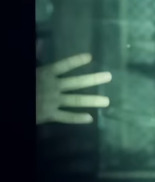
HUMAN HAND HUMAN HAND EW EW EW where the FUCK did that come from???
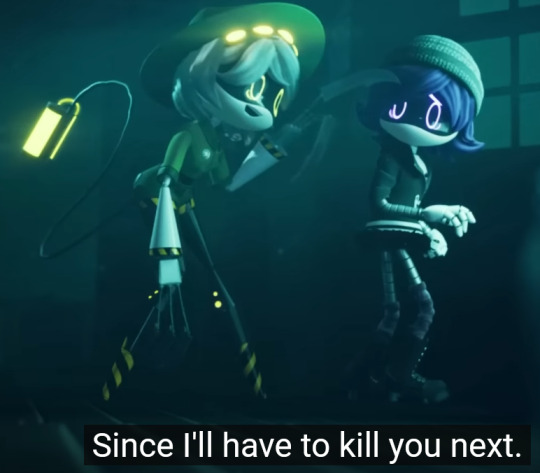
V knows something. i'm not exactly sure what, but i'd bet it has something to do with the DDs' true mission, with Solver-affected Workers being priority targets and unaffected drones being more for sustenance while they clean up JCJenson's real mess (letting the AbsoluteSolver testing program run amok).

yeah, that's the accretion disk of a black hole.

JCJ knew they'd fucked up before it really went to shit. they thought they could nip it in the bud, too, but didn't get around to it due to the core collapse (keep that in mind).

!!! WHATSAPP ROACH !!!
(i'm calling these Roaches from now on)

um. torture chamber? voluntary decommissioning promotional? they knew the Workers really didn't like what the Solver did to them.

girl what are you doing here???
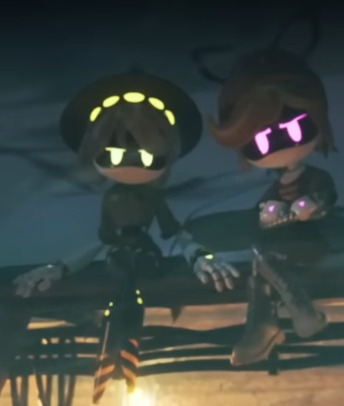
besties behaviour

<333333333
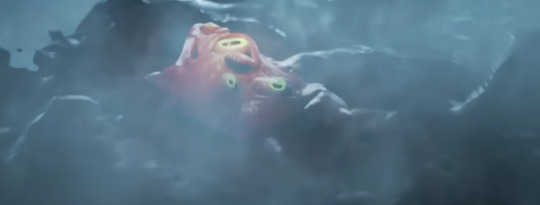
NGUH??? HUH??? WGHAH???
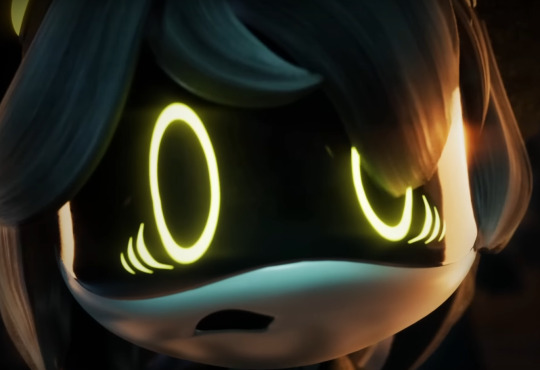
P R I O R I T Y T A R G E T
and, is that...recognition? she knows that this is a special kind of dangerous. she knows this is exactly what JCJ was trying to sweep under the rug.

yeah you know those ominous tentacle drawings in Nori's Kooky Insane Stuff? that's. uh. yeah that checks out
also immediately followed by that warbly growl that Eldritch J made in Episode 2. so that's definitely related.

ooh character development
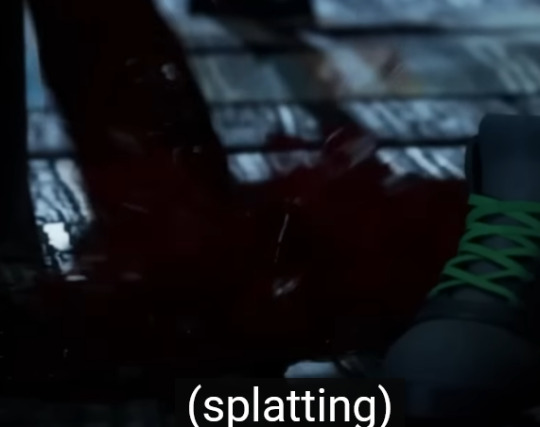
that's uh. that's blood????? very red, iron based BLOOD??????????

ok. ok. the DDs were not an original design. they're derivative, not just sharing the hand/most of the head design with basic Workers, but also designed to MIMIC the bio-enhanced predatory forms/features of Solver test subjects that fully progressed into Zombie Drones. they're still designed, though, so JCJ could modify certain aspects such as making the wings bulletproof and making the tail a stinger.

THAT
THAT'S THE FUCKING HAND AGAIN
IT MOVED EW EW EW
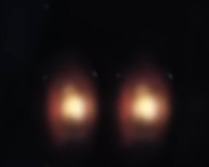

uh. Doll. that you?

looks like "recovery attempt", something's holding back N's memories. whether it's deliberate, or a coping mechanism to keep The Horrors at bay, is yet to be seen

"(unintelligible) trigger word"? ok. both options are still possible. but this means whatever's got his memories on lockdown made a key.

THAT'S HER!!! THAT'S THE DRONE FROM N'S FLASHBACK IN EPISODE 2!!! the hair, the bow, it lines up!!! is she the Solver's Patient Zero???

gloved, severed hand, hanging from a chandelier. something terrible happened in that mansion.
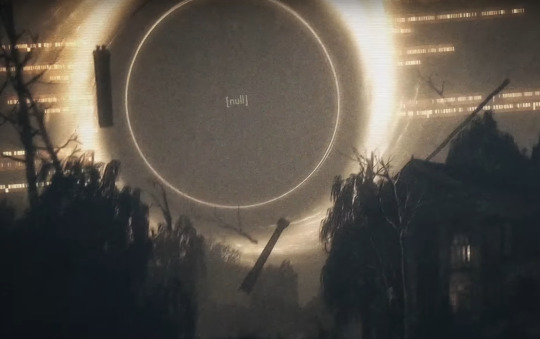
THAT'S. THAT'S A BLACK HOLE. I KNEW IT!!! HAHAHA!!!
ok. so. back to Theorizing. remember, the Solver primarily makes black holes/manipulates gravity. the Flashback Drone was the first to make use of it, massacred a bunch of high-profile humans with a small moon-sized BLACK FUCKING HOLE, and Tessa survived (though this is Liam Vickers, could definitely be some Came Back Wrong-type shit). JCJ needed to do something with the drones that witnessed it while experimenting with the Solver itself on Copper-9. N, V, and J were retained/modified/had their memories/personalities altered to act as a failsafe in case the test subjects needed...disassembly. each of them retained some fragments of information (N's flashbacks, V's aggressive behaviour in response to Zombie Uzi, J's "Workers are corrupted" line in Episode 1) probably for a sort of personal directive to genocide their former fellow Workers. Solver-enabled Workers likely caused the Copper-9 core collapse in the same way.
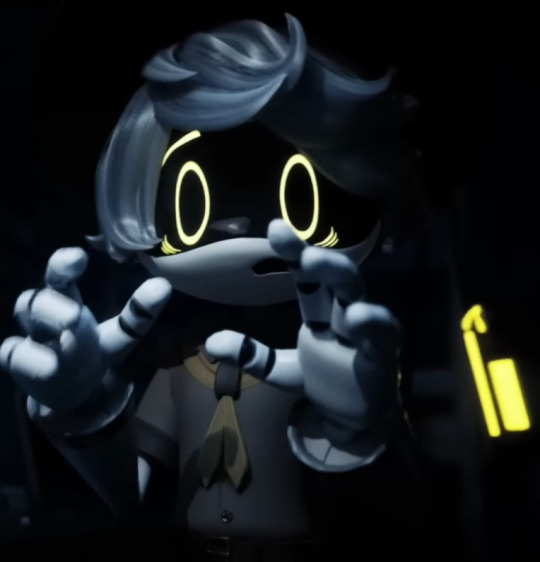
probably doesn't feel too good to have traumatic memories kicked into your digital psyche either

they get high on magnets lmao
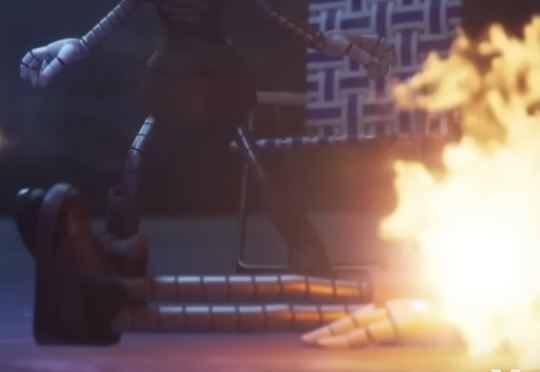
he died as he lived: being insufferable and being lit on fire by Uzi

lmao

me when i scurry and scamper

SEE??? I KNEW IT!!! V knows something about Cyn, the registered Administrator that prevents at least N, maybe other DDs, from taking full advantage of the Solver's capabilities
ran out of image space, i'll make a second post
6 notes
·
View notes
Note
Happy STS, K! How do you factor religion into your story, if at all? How religious are your characters? Did you build them a religion? If so, why did you do it that way? Do they follow a real religion? Why that one? If they aren’t religious at all, why?
!!!! Oooh this is a very good series of questions! I'll answer for Shapeshifter for this one, since it's almost always on my mind ;P
How do you factor religion into your story, if at all?
I'd like to think I factor religion into Shapeshifter in a respectful way - but religion is far from the main focus of this story. I treat religion and religious belief in a very 'mundane' way, in my opinion. Like: Warrick's an artist, he's a mechanic, he's Muslim, he wears wild clothes, he can't cook... it's a part of who he is, but it's not all he is, you know? Sometimes religion is more important to other characters, but to the story it isn't really a big thing. The city has roughly 1 million people, there is a lot of variation capable.
I do have a plot that deals pretty heavily with a cult and extremist religious views, but that's still very much in the 'building' stage so I don't wanna say much about it.
How religious are your characters? Do they follow a real religion? Why that one? If they aren’t religious at all, why?
That is very dependent on the individual characters. Kerr believes in something, but despite being Irish he's not a Christian. Jay has a very contentious relationship with religion and the idea of a higher power guiding the universe. Warrick is Muslim and he might be the most devout believer, but he is still very much a believer. There are a lot of witch characters who believe in various deities or universal powers.
Kerr's belief (or lack of, if you ask him) stems from an event in his childhood that made him definitively sure that the Christian God he'd been taught about couldn't exist. His belief is more in the realm of "the universe has a trajectory but there's no one at the wheel".
Jay tends to range from ambivalent to actively hostile against religion - something that is a direct copy from my own experience. She has a very, very hard time believing in a God or Gods that would willingly allow such suffering and pain to exist in the world. And personally, why they would allow her to become this monstrous thing when she's done nothing to warrant it. (I was suicidally depressed at 13 and being raised in a Christian cult that told me it was my own fault. It left me with some heavy baggage that unfortunately Jay inherited. I have recovered and am doing fine most days now!)
Did you build them a religion? If so, why did you do it that way?
On a technicality, yes. While I am happy to borrow from various open witchcraft practices that exist in the real world, I've developed my own Shapeshifter-specific witchcraft practice for this world. It started as a way for me to explore my own relationship to witchcraft and personal beliefs, and partly to avoid possibly offending anyone who follows real-life practices. And then everything grew a life of it's own and it is distinctly it's Own Thing now lol.
The main tenants of the 'Shapeshifter Witchcraft' practice are as follows:
-the ability to use magic comes almost entirely from simply believing you can use magic. Trust in yourself and magic will listen
-It is impossible to say for certain that any or all deities truly exist, because even a witch who believes in no gods can weild magic. So, to err on the side of caution, it's better to believe all deities could be alive and you shouldn't disparage them
-everything in the world has a base level of magic inside itself. For some objects, this magic level is so small it's almost nonexistent. For some, it's so large they're nearly bursting with it. Regardless of levels, everything has some magic.
-there is a base 'normal' for all living things, and though magic can alter a great deal of a thing's makeup, it cannot truly alter the 'base' of it. A human will always be a human, a dog always a dog, no matter how hard you try to change that with magic
#storyteller saturday#i don't get to talk about the Shapeshifter witchcraft a lot#religion is still a weird topic for me some days#but it's also a wildly fascinating part of the human experience
3 notes
·
View notes
Text
ADHD and Systems
What is ADHD?
ADHD stands for Attention Deficient Hyperactive Disorder. It is a neurological disorder caused by lack of dopamine to the prefrontal cortex, although some brain scans have found that some parts of pwADHD's brains are larger than other parts, contributing to the brain structure. Due to this, you must be born with ADHD. ADHD is *not* caused by trauma, although some trauma symptoms may present similarly (ex: difficulty focusing, hypervigilence being confused for hyperactivity).
What is a system?
A system is a person with OSDDID or P-DID, although not all people with these disorders may want to be called systems. You can only have one of these disorders, although may have subsystems that present with the other disorders if you have DID. These disorders are caused by repetitive childhood trauma causing compartmenalization of ego states and dissociative barriers raising between them. There has been no real study proving otherwise, beyond self reports.
Does ADHD mean more likely to be a system?
I'd say it's more correlation and not causation that so many systems are, although I can link certain aspects to ADHD that may make it "more likely." For example, RSD in ADHD and emotional dysregulation in autism may make it harder for a child to cope with the negative emotions beyond the typical self soothing activities children often use. This, as well as the fact that neurodivergents are often bullied for showing their symtpoms so if school isn't a safe place and out of school isn't safe, this may lead to the need for dissociation.
On top of this, maladaptive daydreaming is extremely common in both pwADHD and trauma survivors and more likely to be a pwADHD's coping mechanism for trauma than a neurotypical who possibly has other outlets. Maladaptive daydreaming is a form of dissociation, however without the trauma, the level of dissociation needed isn't enough to create a system. This is purely oberservation and theory, as I don't have sources to back this up. This is taken from the idea of being more likely to have a harder time coping and the likeliness to rely on maladaptive daydreaming (dissociation) to help do so.
Presentation
There are three different presentations of ADHD: the hyperactive type, the inattentive type, and the combined type. It's a common misconception that a system can only experience one type, but that's not the case. Because the types are all caused by the same thing, the symptoms are just different combinations of how you can experience the disorder (think of this like you would with different symptoms of say BPD or something). So some alters may present more inattentively, some may present more hyperactively, regardless of which type a system may be diagnosed with. For example, we're diagnosed with ADD (outdated term for inattentive), but Sabrina is a lot more hyperactive. Since presentations can change even in singlets, there's no reason why they can't vary between alters.
Does ADHD = more introjects?
This is another misconception. Again, this is more correlation than causation. The only reason I've ever been able to think of as to why this is true is if a system is hyperfixated on something. Not because of the hyperfixation itself, but since it takes up so much of their time, it's likely they'll consume it while splitting and because the brain sees it as a way for them to cope with whatever caused the split, they may introject from it. This is also the case with autism, by the way. And this also just a hypothetical observation, as it's definitely more correlation than causation. It's the only reason I can think of thay systems with ADHD seem to have more introjects than systems without ADHD.
#did system#osdd system#osdd#did alter#did osdd#dissociative system#osdd support#osdd community#osdd things#adhd culture#adhdlife#adhd
6 notes
·
View notes
Text
Description about the mod, copied from the creator LimeyYoshi
What can I expect?
Having this mod in your Downloads folder won't spawn more burglars than before, but when a burglar comes around, you'll be facing a higher challenge than before:
Every time a burglar attempts to steal an item (which can happen between 1 and 5 times per burglar visit, this has not been altered), the burglar may choose to lay down a fire instead of actually stealing the item.
- The chance for that is 50% for most Sims, but 80% for the most playful burglars (8+ Playful points).
- Note that the "no-Fires" version of my mod has no burglars laying fires at all.
- Note that the "Arsonist" version of my mod bumps this chance up to 100%.
Just like in simler90's Burglar Mod: Ghosts, off-world Sims, birds, penguins, RC cars, robots, Social Bunnies, Therapists, Magical Assistants, babies or toddlers do not prevent burglars from spawning anymore. Did that ever make sense in the first place?
In addition, burglars have gained some brainpower, depending on their skillset, personality and hobbies:
- If a burglar builds their Body, Logic and Mechanical skills somewhere (you could even do this yourself - burglars ARE safe NPC's!), or spawns with skills already assigned to them, they may start avoiding burglar alarms - and breaking car alarms. That's right: the most proficient intruders can brick the system in your Sim's car, and make the alarm unusable from there on.
- Sloppy burglars are a bit more likely to mess up and be detected, while neat burglars are a bit more likely to avoid detection.
- FreeTime only: Burglars that do a lot of Tinkering activities are more likely to have developed a hack to skip burglar alarms, or a jammer to break car alarms.
- This may sound scary, but keep in mind: Even the perfect burglar still has a chance to be caught by a car alarm. House burglar alarms are cheaper (as you don't have to buy the car first) but are much more likely to fail to detect the intruder. It's like real life - cheap security systems only hold off the amateurs. :p
Car alarms can still be triggered by the mere presence of a burglar near the car. However, the distance from which the car can detect the intruder is halved, which will now require the burglar to be right next to the car for it to see anything. If the burglar comes from the right side and head straight for the front door, you'll be out of luck unless they choose to go for the car as the first thing to steal or set fire to.
However, with the mod, you also get a powerful new tool: A better car alarm. We don't live in 2004 anymore, after all. Some cars never sleep and have cameras all around to protect itself, and its surroundings. And I tried to reenact that in this mod. The price of the better car alarm is premium, but so is its quality. It comes with AES encryption to make hacking it much harder even for the most skilled burglars, and it comes with a 360° surround camera to detect motion from much further away (as in, the original ten tiles of the vanilla car alarm). If you really want to be safe, you shouldn't skimp on security!
Last but not least, the burglars also got a lot more snarky! They will brag about just anything they mess up on your lot, just to rub more salt into your wounds.
0 notes